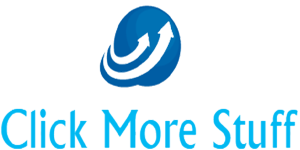In today’s fast-paced world of Human Resources, the role of HR software has evolved beyond mere administrative tools. It has become a cornerstone for businesses striving to create efficient, engaging, and employee-centric workplaces. As we step into 2024, the HR landscape is rapidly transforming, and the need for personalized HRM software solutions has never been more apparent.
This article delves into the exciting possibilities of customizing HR software to your unique needs, not just to satisfy algorithms but to genuinely enhance your HR operations, employee experiences, and ultimately, your company’s success.
The Evolving HR Landscape
In the world of HR, change is the only constant. The landscape of Human Resources is continually evolving, driven by technological innovations, remote work trends, and the shifting expectations of the workforce. 2024 is just around the corner. It means that it’s time that businesses acknowledge upcoming transformations and adapt to remain competitive.
The traditional approach also known as the one-size-fits-all approach, is no longer sufficient to meet the demanding and altering needs of today.
Now, with respect to HRIS software and the amazing potential it can have in the coming year and beyond, we must accept personalization as the key to achieving better outcomes. This shift is not just for algorithms but for the people who drive organizations toward success.

Understanding the Benefits of Personalized HR Software Solutions
Personalizing HR software is not just a trend; it’s a necessity. Here’s why:
Enhanced User Experience
When your HRM software is personalized, it becomes more intuitive and user-friendly. This not only benefits HR professionals but also makes it easier for employees to navigate. The result? Increased adoption rates and higher overall satisfaction among all users.
Improved Efficiency
Customizing your HR software is like having a tailored suit – it fits perfectly. The software aligns with your unique HR processes, eliminating unnecessary steps and reducing administrative tasks. This streamlining translates into significant time and effort savings, allowing HR professionals to focus on what truly matters.
Better Decision-Making
Tailored software isn’t just about appearances; it’s about substance. It grants you access to the most relevant data and analytics specific to your organization. With this at your fingertips, you can make informed decisions based on real insights. In a nutshell, personalized HR software empowers you to embrace data-driven decision-making, driving your organization toward success.
Factors to Consider When Personalizing HR Software
Before diving into the personalization process, it’s essential to consider several factors:
Your Unique Business Needs
Define your business requirements, considering your industry, company size, and specific HR challenges you aim to address.
Integration Capabilities
Ensure that your personalized HR software seamlessly integrates with your existing systems, creating a unified and efficient workflow.
Scalability
Plan for future growth and changes in HR requirements to avoid outgrowing your customized solution.
AI and Machine Learning in Customization
One of the most exciting developments in HRIS software personalization is the integration of artificial intelligence (AI) and machine learning.
Predictive Analytics
AI-driven HR software can analyze historical data to predict future HR needs, allowing you to proactively address potential issues.
Employee Engagement
Machine learning can identify patterns of employee engagement and provide insights to enhance employee satisfaction.
Step-By-Step Guide to Tailoring HR Software
Customizing Human Resource software can be a detailed process, but it’s worth the effort. Here’s a step-by-step guide:
Assessment and Goal Setting
Begin by assessing your current HR software and setting specific goals for customization. What do you aim to achieve with personalized software?
Data Gathering
Collect data on your HR processes, employee feedback, and specific pain points. This data is crucial in the customization process.
Software Selection
Choose the right HR software that offers customization options and aligns with your business needs.
Configuration and Setup
Customize the software based on the data and feedback you’ve collected, focusing on areas like user interfaces, workflows, and reporting.
Testing and Feedback
Thoroughly test the personalized software and gather feedback from HR professionals and end-users. Make necessary adjustments.
Implementation
Roll out the customized HR software gradually, ensuring that employees are comfortable with the changes.
Ongoing Maintenance and Improvements
Regularly review the software’s performance and make improvements as needed to keep it aligned with your evolving business needs.

Creating a Customized User Experience for Employees
One of the significant benefits of personalized HR software is that it allows you to create a customized user experience for your employees.
Self-Service Portals
Provide employees with self-service portals where they can access their HR information, request time off, and access company policies.
Personalized Dashboards
Customize dashboards to show employees the data and metrics most relevant to their roles.
Mobile Accessibility
Ensure that your HR software is mobile-friendly, enabling employees to access it from anywhere.
The Connection Between Personalized HR Software and Improved HR Metrics
Customized HR software can have a substantial impact on various HR metrics.
Employee Satisfaction
Improved user experience and self-service capabilities can lead to higher employee satisfaction scores.
Time Savings
Streamlined processes can significantly reduce the time HR professionals spend on administrative tasks.
Data-Driven Decisions
Access to relevant data and analytics leads to more informed HR decisions, positively affecting turnover rates and recruitment effectiveness.
Challenges and Potential Pitfalls in Personalizing HR Software
While the benefits of personalized HR software are evident, there are potential challenges to be aware of:
Over-Customization
Avoid over-customizing, which can make the software overly complex and challenging to maintain.
Data Security
Maintaining data security and compliance is critical when personalizing HR software.
Employee Training
Properly train employees on the new software to maximize adoption and benefits.
Best Practices for Maintaining Personalized HR Solutions
To ensure the long-term success of your personalized HRM software:
- Regularly assess your HR software’s performance and make improvements as needed.
- Stay updated on the latest Human Resource software trends and technologies.
- Provide ongoing training and support for HR professionals and employees.
The Future of HR Software Personalization Beyond 2024
As technology continues to advance, the future of HR software personalization holds exciting possibilities, including even more sophisticated AI-driven recommendations and increased automation.
Case Studies and Recommendations
Explore real-world case studies showcasing businesses that have achieved significant results through personalization. Additionally, find recommendations for businesses seeking to enhance their HR software in 2024.
Conclusion
In 2024 and beyond, personalizing your HR software is no longer an option; it’s a strategic imperative. To maximize HR efficiency, boost employee satisfaction, and make data-driven decisions, embracing personalization is the way forward. Stay ahead of the competition by leveraging the power of tailored HR solutions in the ever-evolving world of HR.


